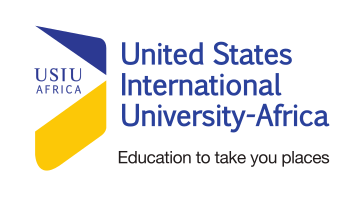The Disability Inclusion office conducts disability audit
By Elizabeth Wanjiku
On Wednesday November 15, the Disability Inclusion office organized an internal stakeholders meeting that brought staff and faculty together, as well key service providers to discuss the USIU-Africa Disability Inclusion policy, the implementation plan and the accessibility report recommendations.
The stakeholders were drawn from various Divisions and Departments such as the Academic Affairs, School Deans, Mastercard Foundation Scholars Program, Quality Assurance, Registrar, Library, Admissions, Advancement and Partnerships, Sports, Counselling, Gender, Equity and Protection etc. In attendance also was Light for the World, who are partners in disability inclusion.
The first session began with a dissemination session of the policy, the implementation plan and review of the time frames. One participant inquired about the disciplinary actions of students with disabilities and the response was that all students with and without disabilities are governed by the Student Handbook that they abide by. Additionally, the Disability Inclusion Policy specifically stipulates the responsibilities of students with disabilities towards the university community. Another question was related to the definition of the term disability as participants noted that there are different definitions and one of the facilitators clarified that a disability results from a long-term impairment that interacts with a barrier. The stakeholders also noted the inter-change of the term disability inclusion versus the policy terms disability and inclusion. This was noted as a gap to be addressed in the next review in three years’ time.
The second session was facilitated by Light for the World, who divided the participants into four groups to discuss the three documents using the Strengths, Weaknesses, Opportunities and Threats (SWOT) analysis in these six domains: strategy, human resources management, accessibility, partnerships, student enrolment and accompaniment, curriculum delivery, development and implementation. Some of the strengths highlighted by participants included the existence of the Disability Inclusion Policy and its implementation plan, the commitment to diversity and inclusion in the University Strategic Plan Goal 4 to develop a supportive, effective, and impactful culture (We are One). Some of the weaknesses included the lack of an action plan that states the actions leading to the achievement of the implementation plan. Threats included partial accessibility of most facilities on campus as well as a gap in resource mobilization when forming partnerships, among others. The opportunities included a proposal to introduce a self-disclosure form that will help capture data of the university community of persons with disabilities to inform programming and budgeting.
The key priority areas identified are sensitization and awareness, training and capacity building, centralization of data for the university community of persons with disabilities, faculty training and skills development to support accessibility, budgeting and resource allocation, and improvement of physical accessibility i.e., maintenance of lifts, signages.
